EOQ - PowerPoint PPT Presentation
Title:
EOQ
Description:
Usually billed as a 'holding cost' Essentially interest on the ... Qt = the lot size in period t. It = units in inventory at the end of period t. Heuristics ... – PowerPoint PPT presentation
Number of Views:67
Avg rating:3.0/5.0
Title: EOQ
1
EOQ
- Answers the Question How Much to Order?
- Assumptions
- Instantaneous production
- Immediate delivery
- Deterministic demand
- Constant demand D units/year
- Constant setup cost A /setup
- Independent products
2
EOQ view of Inventory
Order Quantity Q
Inventory
Time
3
Costs
- Setup Costs
- A /setup
- How many setups if we make Q each time?
- Why not just make D units in one setup?
4
Inventory Cost
- Usually billed as a holding cost
- Essentially interest on the money tied up in
inventory - h /unit/year
- Example Holding 100 units for 6 months costs ?
- Inventory holding Cost
- hAverage Inventory
5
A Model
- Lot Size or Order Quantity Q units
- Average Inventory Level Q/2units
- Annual Demand D units/year
- Order Frequency every D/Q times per year
- Average Variable Cost/Year
- TVC hQ/2 AD/Q
6
The EOQ
- Use Calculus to find the value of Q that
minimizes TVC(Q) - Or...
7
(No Transcript)
8
(No Transcript)
9
(No Transcript)
10
(No Transcript)
11
The Economic Order Quantity
- h Q/2 A D/Q
- Q2 2 A D/h
- Q SQRT(2 A D/h)
- CAVEAT Make sure you use
- commensurate units!
12
An Example
- Raw Material X
- Quarterly demand 6,000 units
- Cost per unit 25/unit
- Holding Cost say 10 per year
- Transaction Cost 100/order
- EOQ SQRT(2 CT D/ CI)
- SQRT(2 100 6,000/(0.02525))
- 1,385 units per shipment
13
Robustness of the EOQ
14
Robustness
15
EPQ
- Answers the Question How Much to Produce?
- Assumptions
- Instantaneous production
- Constant production rate P gt D units/year
- Immediate delivery
- Deterministic demand
- Constant demand D units/year
- Constant setup cost A/setup
- Independent products
16
EPQ view of Inventory
Inventory
Production Quantity Q
Max Inv. Level
Length of Prod. Run
Time
17
A Model
- Lot Size or Production Quantity Q units
- Average Inventory Level
- Production run lasts Q/P
- Inventory grows at rate (P-Q)
- So, max inventory is (P-D)Q/P (1-D/P)Q
- Average inventory is (1-D/P)Q/2
- Order Frequency every D/Q times per year
- Average Variable Cost/Year
- TVC h(1-D/P)Q/2 AD/Q
18
The EPQ
- Use Calculus to find the value of Q that
minimizes TVC(Q) - Or use the previous answer...
- TVC h(1-D/P)Q/2 AD/Q
- hQ/2 AD/Q
- So, Q SQRT(2 A D/h)
- SQRT(2AD/h(1-D/P))
19
An Example
- Raw Material X
- Quarterly demand 6,000 units
- Cost per unit 25/unit
- Holding Cost say 10 per year
- Transaction Cost 100/order
- Quarterly Production Rate 8,000 units
- EOQ SQRT(2 CT D/ CI)
- SQRT(21006,000/(0.02525(1-6/8)))
- 2,771 units per run
20
A Model
- Divide the planning horizon into time buckets t
1, 2, ..., T - Dt units of demand in period t
- ct unit production cost in period t
- At setup cost in period t
- ht inventory holding cost in period t
- Qt the lot size in period t
- It units in inventory at the end of period t
21
Heuristics
- Lot-for-lot Make what is required each period.
- Fixed Order Quantity Order the EOQ
- Period Order Quantity Calculate the EOQ, Q.
Convert to order frequency T Q/D. Orders sized
to last for time T.































